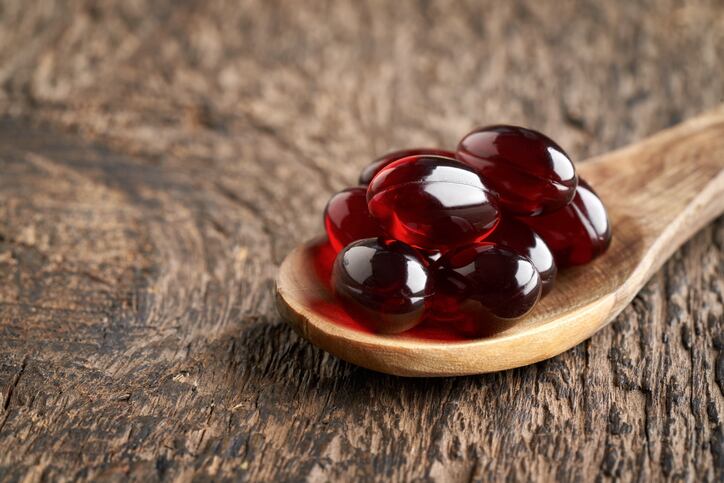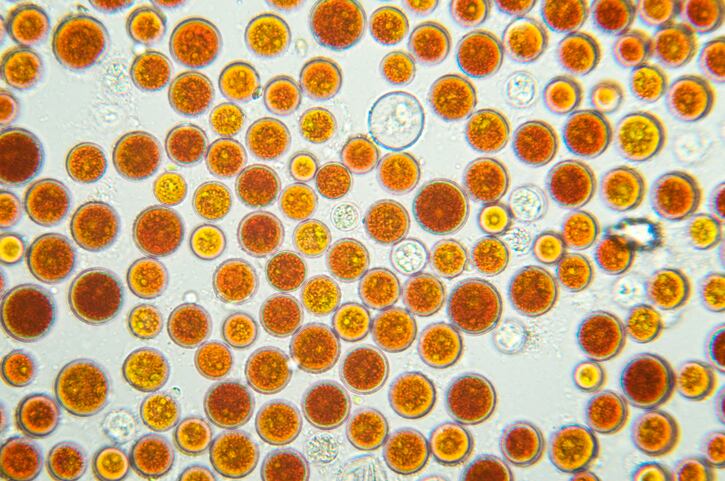In this study comprising of 60 middle-aged and elderly patients with DED, taking 12mg of astaxanthin daily for a month could improve tear film stability and secretion function of the meibomian gland.
DED is characterised by the loss of homeostasis of the tear film and symptoms such as dryness, burning and blurred vision. If not treated properly, it causes ocular surface damage, leading to permanent vision loss.
It is widely thought that oxidative stress and ocular surface inflammation contribute to DED. Increase in oxidative stress with advance age may lead to the loss of function of meibomian glands which can result in reduced tear secretion meibomian gland dysfunction, one of the most common causes of DED. At present, DED prevalence in China range from 21 to 58%, based on various studies.
Currently, anti-inflammatory drugs such as glucocorticoid, cyclosporine A, and tacrolimus are used for the treatment of DED.
Astaxanthin has been widely studied for its ability to reduce oxidative stress damage in many studies including other body organs. However, its clinical effect on DED is unknown, so researchers from Capital Medical University in China conducted this study and published the findings in Frontiers of Nutrition.
Study method
In this research, 60 middle-aged and elderly patients between 51 to 72 years old with mild-to-moderate DED admitted to the Ophthalmology Department of Beijing Tongren Hospital, Capital Medical University were given 6mg of astaxanthin tablets to take twice daily, orally, for 30 days.
Mild-to-moderate DED was diagnosed as no staining or spotty staining of corneal fluorescein ≤ 30 points, tear film break-up time ≥ 2 s, Schirmer I test > 0 mm/5 min, and tear meniscus height > 0 mm.
The tablets are provided by Hangzhou Xinwei Low Carbon Technology R&D Co., Ltd in China, the astaxanthin is of the Haematococcus Pluvialis species.
Subjective symptoms and signs were collected at baseline, week 2 and 4, measured through the ocular surface disease index questionnaire, eyelid margin signs, meibomian gland expressibility, meibum quality, meibomian gland dropout, tear meniscus height, schirmer I test, corneal fluorescein staining, non-invasive tear break-up time, degree of conjunctival congestion, lipid layer thickness, and blink analysis.
In addition, safety was assessed through visual acuity, intraocular pressure, anterior segment, fundus, discomfort symptoms and other adverse reactions.
Eye findings
The findings revealed that ocular surface disease index score, non-invasive tear break-up time, corneal fluorescein staining, eyelid margin signs, meibomian gland expressibility, meibum quality, and blink frequency improved significantly after 30 days.
While tear meniscus height, schirmer I test, degree of conjunctival congestion, lipid layer thickness, meibomian gland dropout, visual acuity and intraocular pressure did not significantly differ post and pre-treatment with astaxanthin.
OSDI is the score representing patients' subjective symptoms related to the severity of DED signs.
Researchers explained the decrease in OSDI scores may be attributed to astaxanthin blocking oxidative stress injury by increasing the level of antioxidant substances in the eye and inactivating and scavenging oxygen free radicals while downregulating inflammatory factors.
Non-invasive tear break-up time indicates the stability of the tear film, which significantly improved by week 2 and sustained to week 4.
“The level of oxidative stress in conjunctival goblet cells in middle-aged and elderly individuals with DED is high. The antioxidant and anti-inflammatory effects of astaxanthin may improve the inflammatory response of conjunctival goblet cells, thereby promoting mucin secretion, playing the role of mucin anchor, and increasing tear film stability.”
The degree of eyelid margin inflammation and function of the meibomian gland are assessed through eyelid margin signs, meibomian gland expressibility, and meibum quality, which was shown to improve continuously with astaxanthin supplementation.
The meibomian gland of DED patients is often in a state of high oxidative stress. Astaxanthin could improve the surrounding environment of meibomian gland cells, reduce oxidative stress and inflammation, which would help improve the amount and quality of meibum secretion.
The mean blink frequency was 24.9, 21.3, and 20.4 per minute at baseline, week 2 and week 4 respectively. Patients with poor tear film stability and severe DED tend to reply on increased blink frequency to achieve an optimal visual effect. For healthy eyes, the average number of blinks per minute is 15 to 20.
In this study, blink frequency was still higher than normal levels, indicating that the patients' symptoms had not disappeared completely.
Conjunctival congestion degree is a major indicator of ocular surface inflammation, which did not significantly improve in this study, “which might be due to the fact that the local anti-inflammatory effect of astaxanthin takes a long time to effectuate, the degree of ocular surface inflammation in patients with mild-to-moderate DED was mild or the short test time and small sample size.”
Recommendations
One of the limitations in this study was its single-group design, with no control group.
The study only lasted one month, which is difficult to predict the long-term efficacy of astaxanthin on DED.
In addition, the tear composition, and oxidative stress were not measured, hence it was not able to observe whether astaxanthin reduced oxidation in the tear.
“More robust methodology, such as randomized controlled trials and tests for inflammatory factors and oxidative stress are needed,” researchers said.
Taken together, the significant findings suggest that astaxanthin may alleviate local inflammatory response, reduce the severity of DED signs and relieve the symptoms.
Source: Frontiers in Nutrition
https://doi.org/10.3389/fnut.2021.796951
“Benefits and Safety of Astaxanthin in the Treatment of Mild-To-Moderate Dry Eye Disease”
Authors: Lei Tian, et al.




